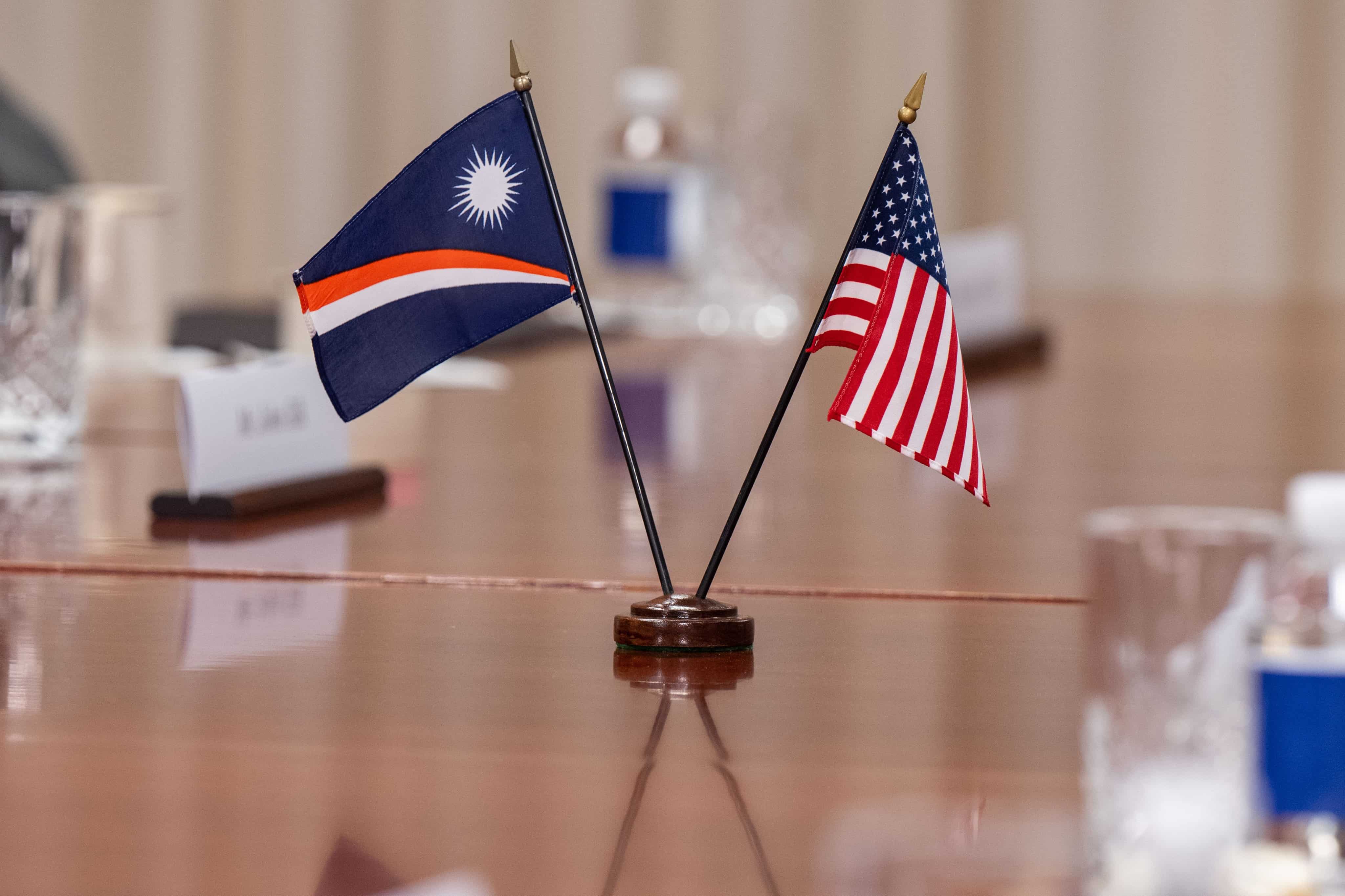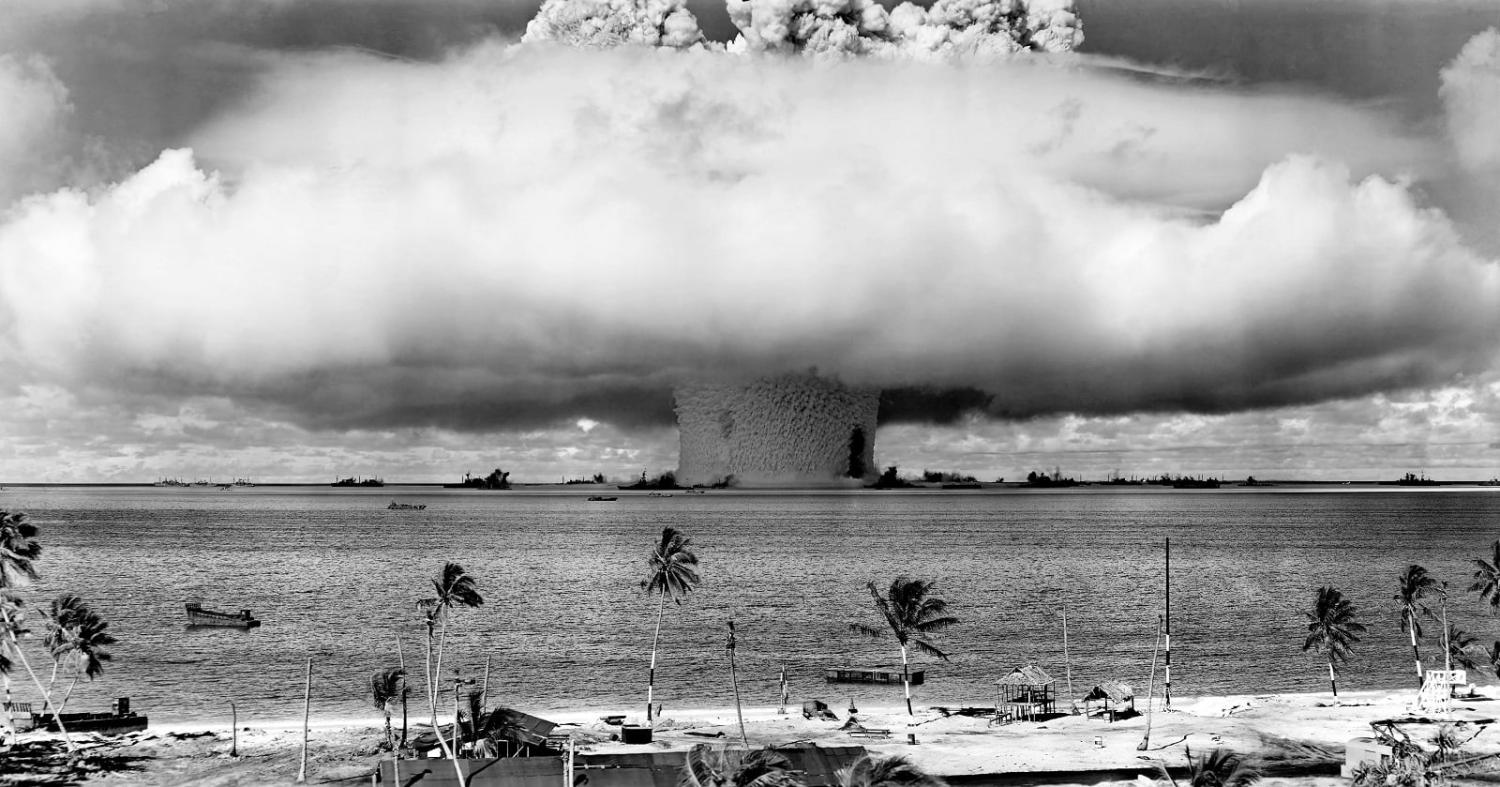The Marshall Islands, clustered in the vast reaches of the Pacific between Australia and Hawaii, are set to renew an agreement with the United States in a process that carries broad geopolitical implications for all powers making a beeline to such Pacific capitals as Majuro of late, including Australia.
With America’s shiny new Pacific Islands policy just only weeks old, its Cold War legacy may yet tarnish its future.
Between 1946 and 1958, the United States infamously used the Marshall Islands as an atom bomb testing ground. During that time, 67 atomic bombs were dropped in the islands, on and around the atolls of Bikini, Enewetak, Rongelap and Utrik, while the Marshallese could only haplessly look on. And, when the testing stopped, the locals of course had to deal with the consequences.
By way of attempting to make amends, after years of campaigning from local and international activists, the US administration launched a treaty program with the Marshallese government in 1986, which became part of the Compact of Free Association agreements in the Pacific.
The dot points of the COFA for the Marshalls are easy migration for the local population (currently around 60,000) to the United States, a clean-up of post-testing waste and damage, and exclusive access for the US military and space units.
The latter point clearly carries the heaviest and most strategic weight.
Kwajalein Atoll is, like most of the Marshall Islands group, a sand-rimmed Pacific paradise. But looks can be deceiving. This tiny dot hosts a major US ballistic missile testing range as well as being an important node in Washington’s space program. Isolated and close to the equator for launches to geosynchronous Earth orbit, Kwajalein is described as “a premier launch facility based upon its strategic geographical location, unique instrumentation, and unsurpassed capability to support missile testing and space operations”.

Beijing’s muscular agenda in the Pacific presents an obvious threat in relations between the United States and the Marshallese. A recent scandal that rocked the island nation gives impetus to claims of China’s intentions. Two Chinese nationals have been charged for money laundering and bribery of Marshall Islands officials as part of a plan to set up a “special economic zone” on the Marshall’s atoll of Rongelap.
While there have been no claims to date that the plan was connected to China’s government, it has raised the stakes in the US-Marshall Islands relations as Washington looks to sandbag existing allies to stop Beijing’s activism.
The current context ensures Washington is under pressure to provide added compensation and support for Marshall Islanders suffering the consequences of a decade of atom bomb tests.
As a result of the testing in the 1940s and 1950s, radioactive waste, soil and ordnance remain scattered around the islands. On Runit Island, the US government, seeking to face down claims they had simply “bombed and left” buried some 3.1 million cubic metres of irradiated waste in a massive hole created for the purpose. The hole has been concreted over leaving a vast dome that is both an eyesore and an unsustainable solution according to experts, as it is leaking waste into the surrounding oceanic environment.
Another US waste dump on Enewetak has even been used for contaminated materials from the US testing site in Nevada, according to a 2019 LA Times investigation.
This month, the United Nations Human Rights Council adopted a ground-breaking resolution to provide “technical assistance and capacity building to address the human rights implications of the nuclear legacy in the Marshall Islands”. The announcement results from the Marshall Islanders’ efforts over the last three years during its first membership period on the council. The outcome puts added pressure on the future of talks as it jabs the United States (even though its role was not directly mentioned in the UNHRC statement) as well as giving the Marshallese an elevated level from which to highlight their cause.
The Marshall Islands government has already cancelled one round of talks that were set for September, claiming, according to a media report, “the lack of response from Washington on the country's US nuclear weapons testing legacy meant there was no reason to meet”.
Other more contemporaneous issues related to poverty and climate change are also pressing in the talks and it is probable that various issues in the mix will be used by the Marshallese to leverage outcomes in their favour.
While few expect the COFA to collapse, the possibility is surely generating anxiety in Washington as anything less than a firm continuance of the existing arrangement would clearly provide a US-shaped hole through which Beijing would feel compelled to try and enter. The Biden administration will almost certainly be obliged to offer more to the Marshallese, which will add to the costs of its Pacific program when talks finally get underway.
In the current context, the tiny island nation finds itself with more influence than it might otherwise have had. How it deploys this opportunity is not without regional implications.

